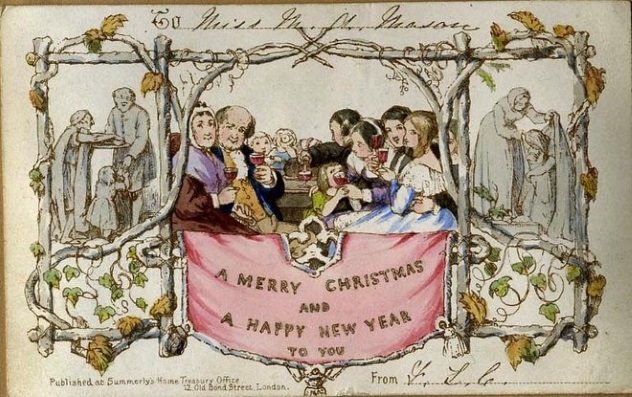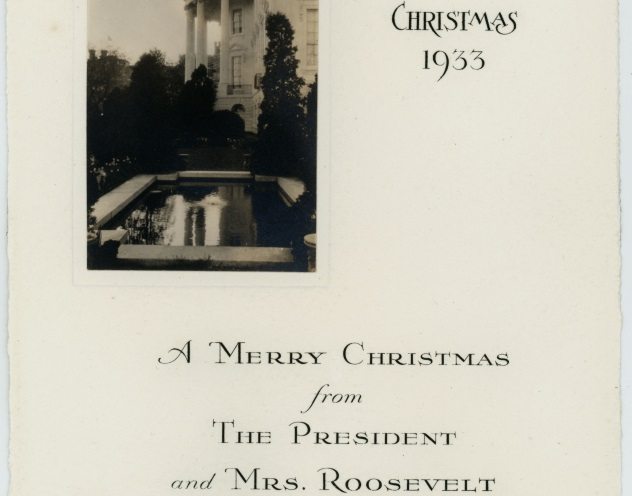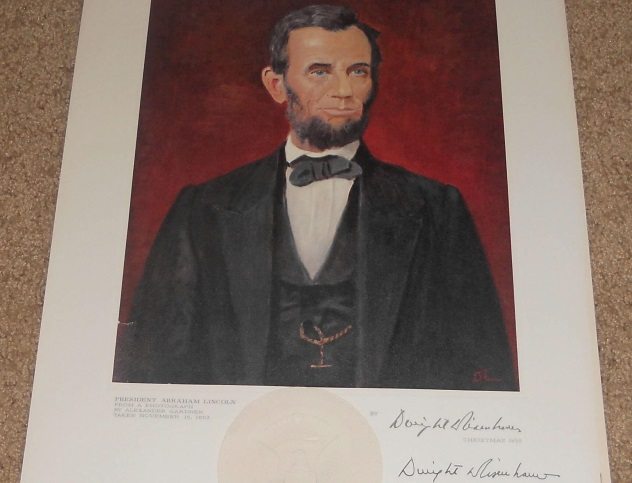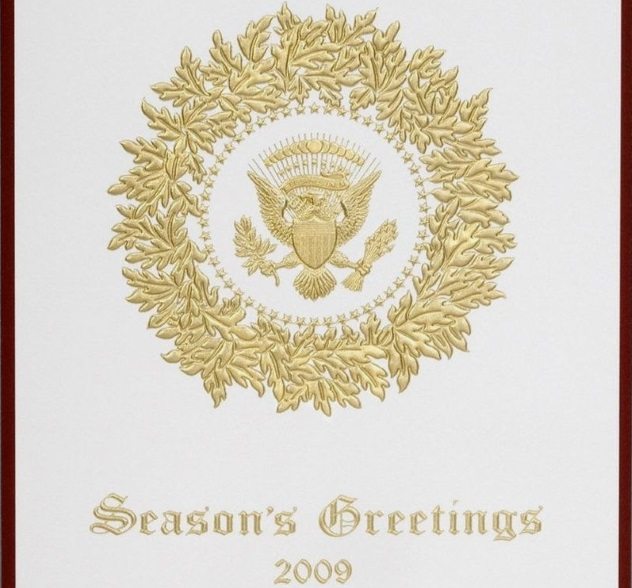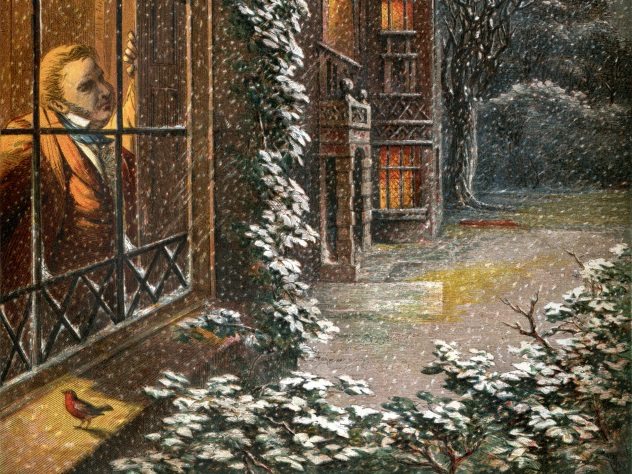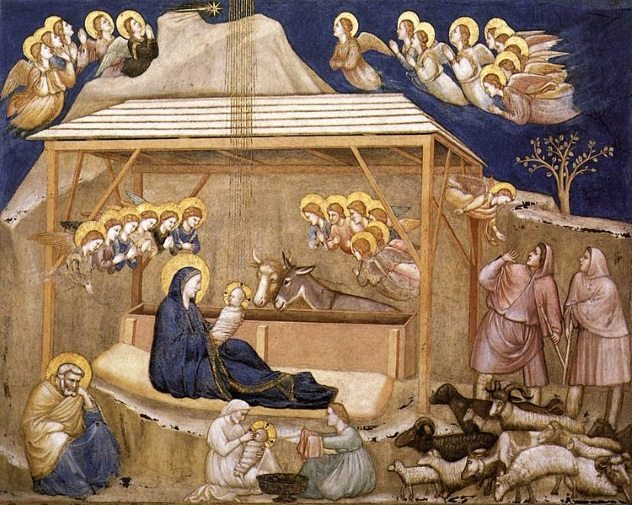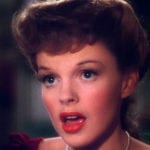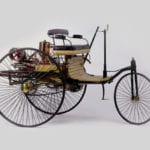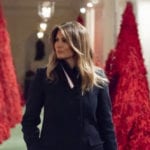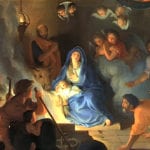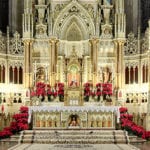In addition to the world’s first Christmas cards, there were a number of other Christmas card firsts, like the first card sent by a royal family, the first card sent by a US president, the first personalized card, the first e-card, and the first mass-produced card. Some of these firsts are charming, others are surprising, and still others are endearing, but all of them are intriguing.
10 World’s First Christmas Card
In 1843, Sir Henry Cole of London, England, decided to do something different for Christmas. In the past, like many others, he’d sent letters to friends, family members, and business clients, but this year, he’d surprise them with a festive greeting card. He commissioned artist J.C. Horsley, who divided the front of the card into three scenes, creating a triptych. The central panel of the 13 by 8.5-centimeter (5 x 3.3 in) card featured a family sipping wine at a holiday feast. The smaller panels on either side of the central scene depicted good deeds appropriate to the occasion. The right panel depicted the clothing of the poor and the left panel showed the feeding of the hungry. A banner bore the card’s wish that its recipients might enjoy “A Merry Christmas And A Happy New Year.” Cole had only to add a brief note to the back. He ordered the printing of 1,000 copies of the card, selling those he didn’t use to a shop.[1]
9 First Monarch’s Christmas Card
Sir Henry Cole may have created the world’s first Christmas card, but Queen Victoria popularized the tradition of sending such cards when an engraving of the royal family’s celebration of the holiday at Windsor Castle was published in 1848. The print showed Queen Victoria, her husband Prince Albert, and their children gathered around a tall evergreen decorated with ornaments. Albert brought the custom of decorating a tree at Christmas from Germany, and the royal family’s adoption of the tradition popularized it, just as the publication of the engraving of them enjoying their tree inspired people to send Christmas cards to their families and friends.[2]
8 First President’s Christmas Card
Although First Lady Lou Henry Hoover began sending Christmas notes to the White House staff during her husband’s presidency, it was President Franklin D. Roosevelt who sent the first president’s Christmas card. In 1933, Roosevelt handed out a card featuring a profile view of the White House portico in the background, with a pool screened by trees and shrubs in the foreground. The card’s message was simple: “Christmas 1933” appeared to the right of the photograph, with “A Merry Christmas from The President and Mrs. Roosevelt” below the picture.[3]
7 First Official White House Christmas Card
In 1953, President Dwight D. Eisenhower started the tradition of distributing official White House Christmas cards. An artist in his own right, Eisenhower had painted a portrait of Abraham Lincoln based on an 1863 photograph taken by Alexander Gardner. The cards, printed on ivory stock, would also bear an embossment of the presidential seal and, in gold lettering, “Season’s Greetings.” Inside the card, the greeting read, “The President and Mrs. Eisenhower extend their best wishes for Christmas and the New Year.” Eisenhower enlisted the aid of Hallmark Cards president Joyce C. Hall, ordering “1,100 white keepsake folders from Hallmark, each containing a reproduction of his Lincoln painting. All of the folders were embossed with the official Presidential Seal.” He sent the cards to diplomats, government officials, cabinet members, and members of Congress. Hallmark printed other official White House cards for Eisenhower throughout his presidency. The company also created personal cards for his family and friends. Since Eisenhower first introduced official White House cards, the tradition has continued, with each newly elected president sending official cards to hundreds of recipients associated with the first family or the executive branch of the US government.[4]
6 First President’s Christmas Cards Promoting Young Artists
During his first term in 1981, President Ronald Reagan wanted to reproduce the Christmas “aura” of the White House so that he could share it with others. He also wanted to “encourage young artists.” To accomplish his objectives, he commissioned a different artist to capture the White House “aura” each year, helping to promote eight of them during the two four-year terms he occupied the executive mansion. Jamie Wyeth created the first of the eight cards, Christmas Eve at the White House. His painting depicts a nighttime winter scene. The sky is full of stars, snow covers the lawn, and trees and shrubs stand like sentinels, guarding the White House’s portico, as a “single lighted window stands out against the darkness, imbuing the White House with a sense of warmth.” First Lady Nancy Reagan said the card made her think everyone “had gone to bed,” leaving her alone, “in [her] dressing room wrapping presents and doing all those things you do the night before Christmas.”[5]
5 First Personalized Christmas Card
Sharpshooter Annie Oakley, who traveled with Buffalo Bill’s Wild West Show, was away from home in 1891 in Glasgow, Scotland, as Christmas approached. Wearing a tartan, she had a photograph taken of herself. Then, she designed her own card, adorning it with her likeness, and had a local printer print a batch of them for her so that she could send the personalized Christmas cards to her friends and family back home.[6]
4 First Electronic Christmas Greeting Cards
The first electronic Christmas cards made their debut on the Internet around 1995. E-cards are usually animated, and many are humorous and colorful. Within limits, customers can customize them to suit themselves, uploading personal photographs and videos and writing personalized text. Hundreds of millions are sold each year, although they’ve “had little impact on the sale or appeal of paper greeting cards,” which sell in the billions. Paper cards have benefited from the use of technology as well, offering musical cards, mechanical cards, cards that count down toward Christmas, and other novelty properties.[7]
3 First Politically Correct Christmas Card
In 2009, during his first year in office, President Barack Obama created controversy when he honored the Christmas holiday with the White House’s first politically correct Christmas card. The word “Christmas” didn’t appear on the front of the card or inside it, and the picture the card bore was just as noncommittal: “a gold wreath surrounding a gold presidential coat of arms” surrounded by a maroon border. The card’s salutation, “Season’s Greetings,” and the year, “2009,” were centered below. Recipients of the card would read the innocuous message, “May your family have a joyous holiday season and a new year blessed with hope and happiness.” During the previous eight years, President George W. Bush’s Christmas cards had included a Bible verse, and for another eight years before that, President Bill Clinton’s Christmas cards had depicted various rooms in the White House adorned with Christmas decorations. Critics didn’t respond well to Obama’s generic card, and Representative Henry Brown, a South Carolina Republican, “introduced a resolution calling for a defense of the sacredness of the Christmas holiday.” Over 40 of of his colleagues, Democrat and Republican alike, cosigned Brown’s bill. A White House spokesperson responded to the controversy by assuring Americans that no offense was intended. Obama preferred the generic design because he wanted his card to reflect the fact that Americans were of various religious faiths. It was pointed out that Obama’s predecessor had also sent out Christmas cards that made no mention of Christmas, as had Obama himself, when he’d been a US senator. Just as Obama’s politically correct Christmas card had its critics, it also had its defenders, including Barry Lynn, the executive director of Americans United for Separation of Church and State.[8]
2 First Mass-Produced Christmas Card
In 1866, Goodall & Son, a British publisher, commissioned Marcus Ward & Co. “to lithograph a set of four different designs” drawn by artist C.H. Bennett. The next year, Goodall mass-produced the first Christmas card, featuring designs created by the same artist, the first type of modern cards now familiar to millions.[9]
1 First Christmas Card With Two Figures Of The Baby Jesus
Although, for Christians, Jesus is one of a kind, a Christmas card featuring two figures of Him as a baby is not unorthodox. It was sent for Christmas in 2016 by none other than Pope Francis himself. The front of the card is printed with a color photograph of Giotto’s 14th-century fresco of the nativity, which is located in the lower basilica of St. Francis in Assisi. The masterpiece, completed in 1313, is unique: It’s the only nativity scene in which there are two baby Jesuses. One baby Jesus represents His human nature; the other signifies His divine nature. The color blue, seen in Bethlehem’s night sky and in the robes worn by the Virgin Mary and by her husband Joseph, symbolize the “divine aspect” of the scene, said Enzo Fortunato, press officer of the Sacred Convent of Assisi. The color also “moves and captures everyone, pilgrim or tourist,” fascinating visitors to the basilica with its “deep, luminous color, above all royal and real.” Fortunato explained the pope’s choice of the fresco for his Christmas card. The pontiff was “emphasizing three ‘terribly human’ gestures”: “The first is represented by the two midwives who are located next to one of the baby Jesuses, embracing, wrapping and supporting him.” Their embrace of the baby suggests Jesus is “a part of the humanity to which we belong.” The fresco is symbolic in other ways, too. Jesus’s swaddling clothes represent “the need to alleviate the suffering of others.” One type of suffering, that of hunger, is symbolized through breastfeeding. Another type of suffering, that of cold, is suggested by Jesus having been compelled “to leave his native home.” The grotto and the shepherds’ area stand for “two signs of daily deprivation that become the center of hope,” Fortunato added. For St. Francis, who started the nativity scene tradition in 1223, the nativity allowed him “to recall the memory of that Child who was born in Bethlehem, to see with bodily eyes the inconveniences of his infancy, how he lay in the manger, and how the ox and ass stood by.” Pope Francis’s unusual Christmas card contains an “abridged” version of Isaiah 9:5: “For a child will be born to us, Prince of Peace.”[10]
